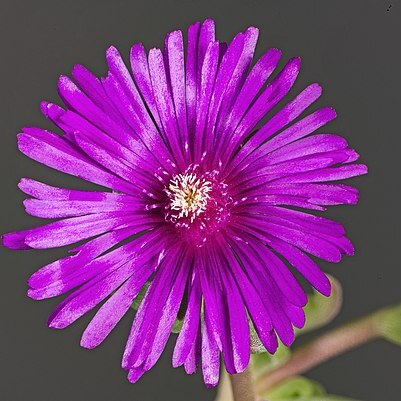Decumbent or prostrate succulent perennial herbs, usually branched with distinct internodes and often forming clumps, sometimes tuberous and stemless. Leaves opposite, sessile, lanceolate or linear-lanceolate, soft, green, minutely and distinctly papillose, devoid of radiating setae at their tips. Flowers solitary, terminal or axillary. Calyx gamosepalous, 5-lobed, the lobes unequal, the largest one or two horned or tailed and leaf-like. Staminodes many, obvious, petaloid, lanceolate, free. Stamens many, free, like the staminodes inserted on the calyx-tube. Ovary inferior, of 5 united carpels, 5-celled; stigmas 5, free, style-like; ovules and seeds many per cell, parietal. Fruit a 5-valved capsule, opening under moist conditions by means of 2 contiguous expanding keels running down the inner face of each valve, the keels membranous-winged in their apical (outer) part. Cell-wings absent, the cells thus unroofed and the seeds exposed in the expanded capsule.
Ovary 5-locular, more or less convex; glands separated, partially crenulated; placentas parietal; stigmas 5, acute, papillose.
Leaves opposite, sessile, slightly connate, more or less finely papillose, broadly triangular to cylindrical or ovate, entire.
Flowers terminal or axillary, solitary or in cymes, pedicellate, with leaf-like bracts, purple or white.
Perianth-segments 5, equal or unequal, the longer ones sometimes horn-shaped or caudate.
Decumbent or prostrate creeping shrubs or perennial herbs.
Fruit 5-locular, keels with membranous marginal wings.
Stamens whitish, sometimes hairy towards the base.
Staminodes in few series, more or less linear.
Seeds suborbicular, pale brown.

